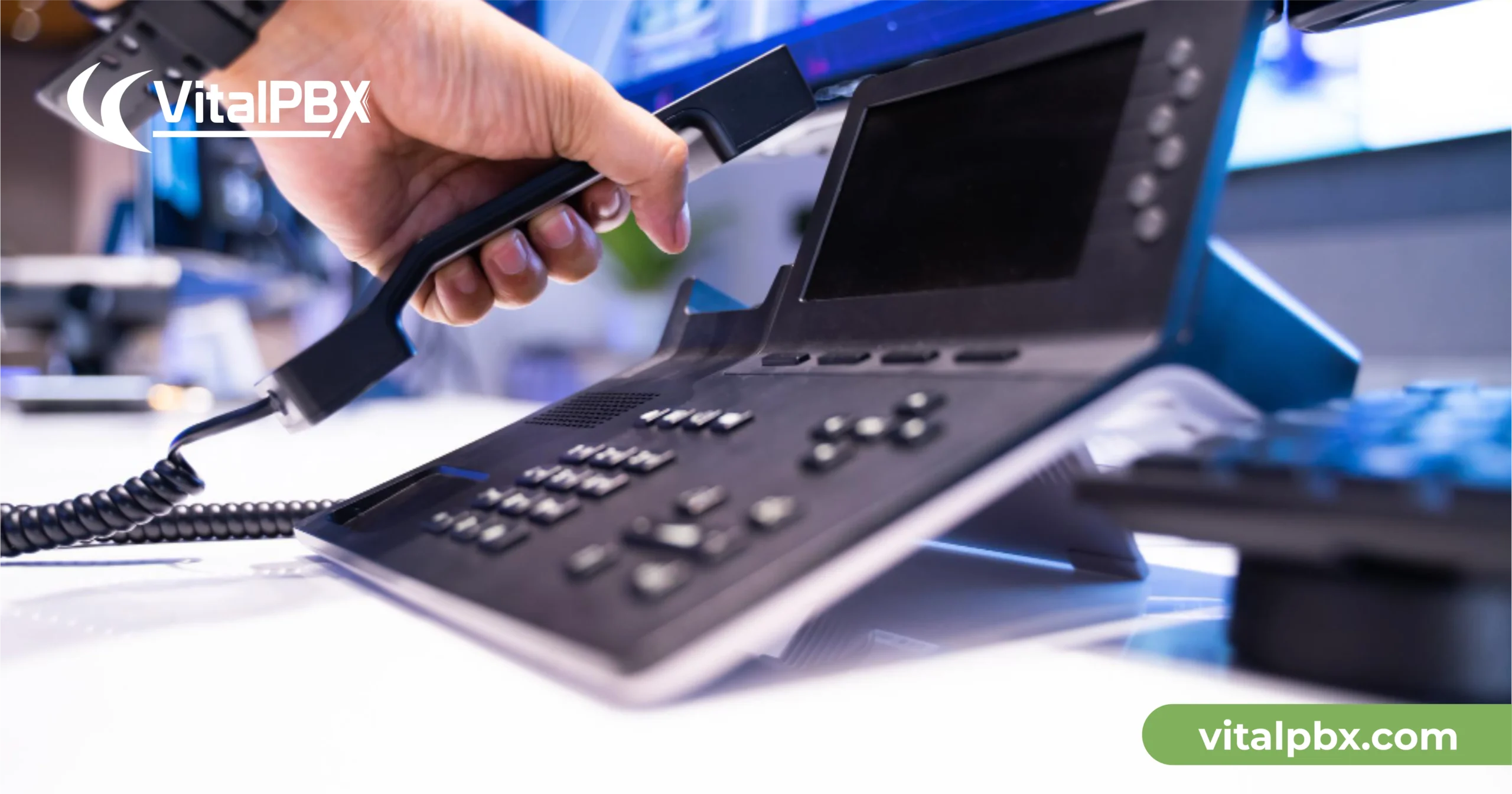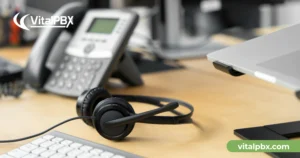Choosing the Best Phone System for Your Small Call Center in 2025: A Complete Guide
Small call centers are the nerve center of customer interaction for countless growing businesses. They are where problems are solved, sales are closed, and brand loyalty is forged. But to operate efficiently and deliver exceptional service, your team needs more than just a few phone lines. Choosing the right phone system for a small call center is one of the most critical technology decisions you’ll make, directly impacting productivity, customer satisfaction, and your bottom line.
The market is flooded with options, from complex enterprise solutions to basic multi-line systems. This can make the selection process feel overwhelming. How do you find a system that offers powerful features without a hefty price tag? How do you ensure it can grow with your business? This comprehensive guide will walk you through everything you need to know in 2025 to select the perfect communication hub for your team, empowering them to deliver world-class service with every call.
The Foundation: Why Your Call Center Needs More Than Just a Phone
In the early days of a business, it might seem sufficient to handle calls with a standard office phone system or even mobile phones. However, as your call volume grows, the limitations of this approach become painfully clear. Missed calls, long wait times, and a lack of performance insight can quickly damage your reputation and frustrate both customers and employees.
A dedicated call center phone system, often built on a powerful PBX (Private Branch Exchange), is designed specifically to manage a high volume of inbound and outbound communications. It’s not just about making and receiving calls; it’s about managing, routing, and analyzing them with intelligence and efficiency.
Key Benefits of a Modern Call Center System
Investing in a specialized system transforms your customer service from a reactive function into a strategic asset. The benefits are immediate and far-reaching:
- Enhanced Customer Experience (CX): Intelligently route callers to the most qualified agent, provide self-service options, and offer callback requests to minimize hold times. A smooth, professional experience is crucial for customer retention, as highlighted by experts at Gartner, who consistently link positive CX to business growth.
- Increased Agent Productivity: Features like CRM integration, call pop-ups, and streamlined workflows empower agents to handle calls faster and more effectively. They spend less time on manual tasks and more time helping customers.
- Actionable Performance Insights: With real-time dashboards and historical reports, managers can monitor key metrics, identify coaching opportunities, and make data-driven decisions to optimize operations.
- Unmatched Scalability: A modern phone system allows you to add or remove agents, phone lines, and features with ease, ensuring your communication infrastructure can scale seamlessly as your business grows.
On-Premise vs. Cloud-Based: Which PBX is Right for Your Small Call Center?
One of the first major decisions you’ll face is where your phone system will “live.” The two primary models are on-premise and cloud-based (or hosted), each with its own set of advantages. Understanding the difference is key to choosing the right fit for your budget, IT resources, and operational needs.
The Case for On-Premise PBX Systems
An on-premise PBX means you own and manage the physical hardware and software at your business location. You have a server in your office that runs the entire phone system. This traditional model offers a high degree of control and customization.
Advantages:
- Total Control: Your IT team has full control over the system’s configuration, security, and maintenance.
- Long-Term Cost: After the initial investment in hardware, you may have lower recurring costs compared to a subscription-based cloud service.
- Data Security: All call data and recordings are stored on your own servers, which can be a requirement for businesses in highly regulated industries.
Considerations:
- High Upfront Cost: Requires a significant initial investment in servers, hardware, and potentially installation fees.
- IT Overhead: Demands in-house IT expertise for setup, maintenance, updates, and troubleshooting.
- Limited Flexibility: Less adaptable for supporting remote or geographically dispersed agents.
The Power of Cloud-Based (Hosted) PBX Solutions
A cloud-based PBX, also known as Hosted PBX or UCaaS (Unified Communications as a Service), is a service where the provider manages the entire phone system infrastructure in their secure data centers. You access the system over the internet. This model has become incredibly popular for small and medium-sized businesses due to its flexibility and low barrier to entry.
Advantages:
- Low Initial Investment: No need to purchase expensive server hardware. You typically pay a predictable monthly per-user fee.
- Ultimate Scalability: Easily add or remove users and features as your team changes in size.
- Remote Work Ready: Agents can connect from anywhere with an internet connection using a desk phone, softphone, or mobile app.
- Hassle-Free Maintenance: The provider handles all updates, security patches, and system maintenance.
Considerations:
- Recurring Costs: The subscription model means you have an ongoing monthly expense.
- Internet Dependency: Your call quality is directly tied to the stability and bandwidth of your internet connection.
For most small call centers in 2025, a flexible VoIP PBX solution that can be deployed either in the cloud or on-premise offers the perfect balance. Systems like VitalPBX give you the choice to start in the cloud for convenience and then migrate on-premise later if your needs change, providing a future-proof investment.
Must-Have Features for Your Small Call Center Phone System in 2025
A powerful phone system is defined by its features. For a small call center, you need to focus on the tools that deliver the most impact on efficiency and customer satisfaction. Here are the essential features to look for:
1. Automatic Call Distribution (ACD)
ACD is the intelligent engine of your call center. It automatically routes incoming calls to specific agents or departments based on predefined rules. This could be based on agent skill (e.g., routing technical questions to support experts), caller ID, or simply who has been available the longest. This ensures customers connect with the right person on the first try.
2. Interactive Voice Response (IVR)
An IVR is an automated menu system that allows callers to interact using their keypad (“Press 1 for Sales, Press 2 for Support”). A well-designed IVR can resolve simple queries without needing an agent (e.g., checking account balances or business hours) and effectively segment callers before they are routed, saving valuable agent time.
3. Call Queues & Callback Options
When all agents are busy, a call queue places callers on hold until someone becomes available. A modern system should offer features like estimated wait times, position-in-queue announcements, and a virtual callback option. Offering to call a customer back when it’s their turn dramatically reduces frustration and call abandonment rates.
4. Real-Time Monitoring & Reporting
You can’t improve what you don’t measure. A robust phone system for a small call center must provide detailed analytics.
- Real-Time Dashboards/Wallboards: Display live metrics like calls in queue, average wait time, and agent status.
- Historical Reports: Track long-term trends, agent performance, call volume patterns, and service level agreements (SLAs). This data is invaluable for staffing, training, and strategic planning. VitalPBX offers a comprehensive Call Center Statistics module for this purpose.
5. Call Recording, Whisper & Barge-in
These features are essential for quality assurance (QA) and agent training.
- Call Recording: Automatically record calls for later review to ensure quality and compliance.
- Call Whisper: Allows a manager to speak to an agent during a live call without the customer hearing, providing real-time coaching.
- Call Barge-in: Enables a manager to join a call to assist an agent or de-escalate a situation.
6. CRM Integration
Integrating your phone system with your Customer Relationship Management (CRM) software is a game-changer. When a call comes in, the agent’s screen can automatically pop up with the customer’s complete history, past interactions, and account details. This personalization leads to faster resolutions and a vastly improved customer experience.
7. Softphones & Mobile Apps
The modern workforce is flexible. Your phone system should be too. Softphones are software applications that let agents make and receive calls from their computer or laptop. Mobile apps extend this functionality to smartphones, allowing your team to stay connected from anywhere. The VitXi WebRTC Softphone is a perfect example of a tool that enables this flexibility.
Frequently Asked Questions (FAQ) about Small Call Center Phone Systems
When choosing a new system, many questions come up. Here are answers to some of the most common queries we hear from small businesses.
Q: What is the best type of phone system for a call center?
A: For most small call centers, a VoIP (Voice over Internet Protocol) PBX system is the best choice. It offers advanced features, scalability, and cost-effectiveness compared to traditional analog systems. Whether you choose a cloud-based or on-premise deployment depends on your budget and IT resources, but VoIP is the underlying technology that powers modern call centers.
Q: How many agents can a small call center phone system support?
A: This varies by system, but modern software-based PBX solutions are highly scalable. They can easily support a team of 5-10 agents and grow to accommodate 50, 100, or even more users as your business expands. The key is to choose a system that doesn’t limit your growth.
Q: Can I use my existing business phone numbers?
A: Yes, absolutely. In a process called “porting,” you can transfer your existing phone numbers from your current provider to your new VoIP system. This ensures a seamless transition for your customers, who can continue to call the number they already know.
Q: Do I need special phones for a VoIP call center system?
A: You have several options. You can use IP phones, which are physical desk phones designed to work over the internet. Alternatively, agents can use a high-quality USB headset connected to their computer and use a softphone application. This second option is often more cost-effective and ideal for remote teams.
Q: How can a new phone system improve my team’s performance?
A: A new system improves performance through a combination of efficiency and insight. Features like ACD and CRM integration reduce manual work and speed up call handling. Simultaneously, detailed reporting and call monitoring tools give managers the data they need to identify top performers, provide targeted coaching, and optimize call-handling strategies.
Conclusion: Empower Your Team with the Right Communication Tools
Choosing a phone system for your small call center is more than an IT upgrade; it’s a strategic investment in your customer relationships and your company’s growth. The right platform will empower your agents with the tools they need to be efficient, professional, and effective. It provides managers with the visibility required to lead and optimize, and it gives your customers the seamless, positive experience they deserve.
In 2025, you don’t need an enterprise budget to access enterprise-grade features. Flexible, powerful, and affordable VoIP PBX solutions have leveled the playing field. By focusing on essential features like intelligent call routing, robust analytics, and CRM integration, you can build a communication infrastructure that not only meets your needs today but is ready to scale with you tomorrow.
Ready to transform your customer communication and unlock your team’s full potential? See how VitalPBX delivers the power, flexibility, and affordability your small call center needs to succeed.
Download VitalPBX for free today and experience the future of call center management.




